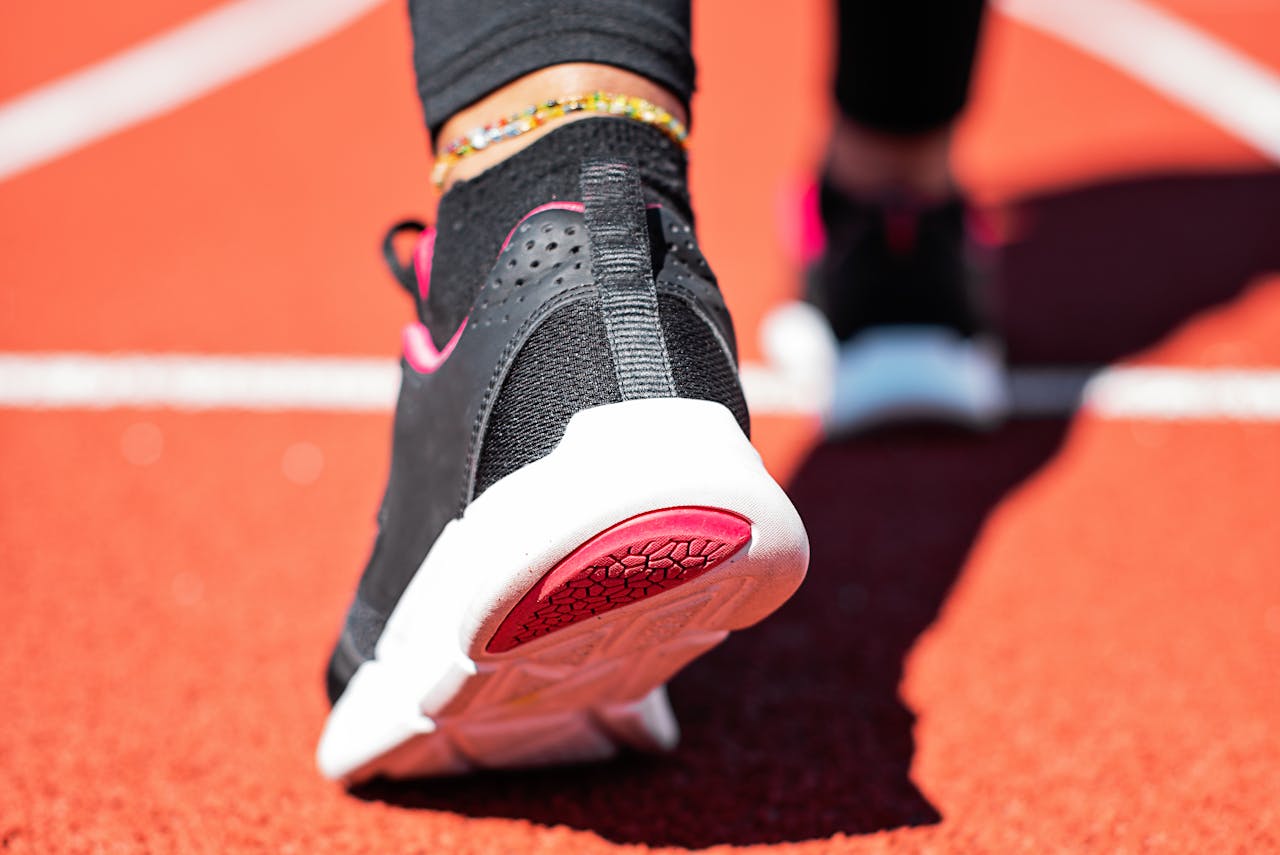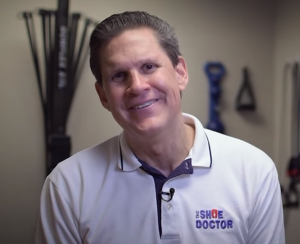Key Takeaways
- Plantar fasciitis, a prevalent source of heel discomfort that frequently results from overuse, inappropriate footwear, and biomechanical problems, therefore, requires timely identification for effective management and lasting relief.
- Understanding the plantar fascia and its role in causing plantar fasciitis enables more accurate treatment and targeted prevention for those at risk.
- These custom orthotics are made to compensate for specific foot shapes, fix biomechanical issues, and disperse pressure, offering personalized support that can significantly ease plantar fasciitis pain and restore movement.
- Through expert evaluation, meticulous material choice, and accurate device fabrication, we craft custom orthotics that provide comfort and enduring relief for a wide range of users.
- Pairing custom orthotics with the right shoes, daily wearing, and maintenance keeps them working optimally, while occasional readjustments ensure they adapt to your evolving foot needs.
- Over-the-counter orthotics can provide mild, temporary relief of plantar fasciitis. Custom orthotics offer better, personalized support that is more effective for treating chronic or complex cases.
Custom orthotics for plantar fasciitis are shoe inserts designed to match the individual contours of your feet to relieve heel pain. People with plantar fasciitis usually experience pain in the heel or bottom of their foot, and custom orthotics can assist by providing consistent support and improved weight distribution. Most clinics utilize scans or molds of your feet to design these inserts, so the fit is nearly perfect. Physicians and therapists frequently recommend custom orthotics when plantar fasciitis pain doesn’t subside with measures such as rest or basic shoe inserts. In this post, discover how custom orthotics work, what separates them from store-bought inserts, and what to consider before you get them for enduring pain relief.
Understanding Plantar Fasciitis: The Root of That Sharp Heel Pain
Plantar fasciitis is a not-so-fun crush injury to the plantar fascia—the long band of tissue connecting the heel to the toes. This issue is a common source of stabbing heel pain when taking those first steps of the day, or after prolonged sitting. It strikes across the globe, particularly targeting individuals with high activity levels, such as runners, and those who stand for extended hours on unforgiving floors. Early diagnosis can translate into faster and better recovery and help you avoid chronic pain.
1. How the Plantar Fascia Works
The plantar fascia acts as a shock absorber and supports the arch. This rugged band connects the heel bone to the base of the toes. Its primary role is to stabilize the foot while walking and running, shouldering significant tension with every step.
When strained, these can create tiny tears in the plantar fascia. These tears may cause inflammation and pain. Understanding how the plantar fascia fits into the rest of the foot’s structure is crucial for both prevention and treatment. Individuals with flat feet or high arches add stress to the fascia that can accelerate wear and increase the risk of this condition.
2. What Triggers Plantar Fasciitis?
Plantar fasciitis most commonly results from repetitive stress or strain on the foot. Shoes without sufficient support, marathon running, or occupations that require prolonged standing—particularly on hard surfaces—all add increased tension to the fascia.
Pounding it through sports or everyday life can create microtears in the tissue. That’s why athletes and active individuals see more cases. Biomechanical problems, such as flat feet or high arches, make it even riskier. Overweight and sedentary folks are at risk because the fascia has to support extra weight or gets too stiff.
3. Spotting the Symptoms of Plantar Fasciitis
The primary symptom is heel pain, sharp and stabbing, experienced most acutely after rest or in the morning. After you get going, the pain may dissipate, but return after prolonged standing or walking.
Others feel swelling or stiffness in the bottom of their foot. Most experience pain with palpation of the heel as well. If the issue goes untreated early, the pain can linger throughout the day and begin to impact your work or workouts.
4. The Risk Factors
Age, weight, and occupations that require extensive standing all contribute. Certain foot types — such as flat feet or arches that are too high — increase your risk of developing plantar fasciitis.
Runners and athletes, who perform the same foot motions over and over, have a greater risk. It’s being in bad shoes that makes it worse for everyone.
Standing on hard ground for hours makes it even harder.
5. Who’s at Risk for Plantar Fasciitis?
Physicians examine symptoms and conduct a quick foot check. They may inquire about your typical activity level or inspect your footwear. Occasionally, imaging is performed to exclude other heel issues.
Getting the correct diagnosis is important for selecting the best treatment. Early action prevents pain from becoming chronic.
Why Choose Custom Orthotics?
Custom orthotics are prescription shoe inserts specially designed to match the unique shape and biomechanics of your feet. Unlike mass-produced insoles, they are created from either a 3D scan or a plaster mold of your feet to ensure precise support, cushioning, and alignment. Here’s why they are often recommended for people dealing with plantar fasciitis:
Tailored Fit and Function: Custom orthotics are molded to your foot structure, taking into account your arch type (high or flat), gait pattern, weight distribution, and foot mechanics. This personalized design helps provide targeted relief and correction where it’s needed most.
Support That Reduces Strain: Plantar fasciitis pain is commonly caused by repetitive stress and strain on the heel and arch. Custom orthotics help by redistributing weight more evenly across the foot, easing tension on inflamed areas, and promoting better foot alignment.
Gait Correction: Poor gait mechanics—like overpronation or underpronation—can exacerbate plantar fasciitis. Custom orthotics can realign your stride and improve biomechanics, helping prevent further injury and improving walking efficiency over time.
Documented Pain Relief Timeline: Research suggests that patients may begin to experience reduced pain within 4 to 12 weeks of using orthotics. In some studies, long-term users (6–12 months) have reported not only reduced plantar fasciitis symptoms but also improved overall foot function.
Prevention of Recurrence: By maintaining proper foot alignment, custom orthotics not only relieve current symptoms but may also reduce the likelihood of recurrence, especially when paired with other treatments like stretching and proper footwear.
Increased Comfort for Daily Activities: When properly fitted, custom orthotics reduce localized pressure and friction. This makes them especially beneficial for individuals who stand for long hours, such as teachers, healthcare workers, or people with additional conditions like posterior tibial tendonitis or metatarsalgia.
Cost and Considerations: Custom orthotics typically cost between $200 and $800 and may not be covered by all insurance plans. They take approximately 1–3 weeks to fabricate. While they are safe for most people and pose minimal risk of side effects, studies show that for mild to moderate plantar fasciitis, high-quality over-the-counter orthotics may offer comparable results, especially if cost is a concern.
Despite the price, custom orthotics remain a highly effective treatment option for those with persistent or severe plantar fasciitis, providing long-term relief and functional support that generic insoles often can’t match.

How Custom Orthotics Work
Custom orthotics are shoe inserts made for an individual’s foot shape and requirements. They assist in plantar fasciitis as they correct foot alignment, distribute pressure, and provide improved shock absorption. These inserts typically begin with a gait analysis, confirming the device follows the foot and addresses the actual issue. When applied correctly, custom orthotics can alleviate discomfort and assist individuals in achieving more optimal movement.
Biomechanical Correction
Custom orthotics help align your foot and ankle so they stay in a neutral, balanced position. This reduces strain on the plantar fascia by giving your arch proper support and helping your heel land correctly with each step. Many people with plantar fasciitis have gait problems—like rolling the foot too far inward or outward—which adds pressure in all the wrong places. Custom orthotics correct these patterns, easing pain and helping prevent future injuries. Since everyone walks differently, off-the-shelf insoles don’t always work. Custom orthotics are made from real gait data to fit your foot exactly, offering lasting support and relief.
Pressure Redistribution
Custom orthotics distribute body weight over the foot. This prevents high-pressure areas that exacerbate plantar fasciitis. The effect is less pain and hot spots after long walks or standing.
The additional cushioning in custom orthotics helps to soften each step. This makes living daily tasks easier and gets people through the day with less pain. Proper pressure distribution leads to improved foot mechanics and decreased risk of exacerbations.
Shock Absorption
The core materials in custom orthotics—such as EVA foam or gel—provide robust shock absorption. These absorb the impact of every step and protect the plantar fascia from stress.
Good shock absorption reduces the impact on the heel and arch. This can prevent new injuries and allow the plantar fascia to heal. Eventually, they’re able to walk or run farther with less pain. Custom orthotics, paired with stretching timing, frequently provide the most favorable outcomes for plantar fasciitis.
The Step-by-Step Process of Creating Custom Orthotics
Custom orthotics for plantar fasciitis are constructed through a progressive, meticulous process aimed at creating a unit customized to the user’s foot anatomy and requirements. The process is as follows:
- Professional assessment: A podiatrist examines foot shape, alignment, and gait. This step often includes gait analysis, both visual and with pressure-mapping tools, to catch issues that off-the-shelf insoles miss.
- Material selection: The orthotic’s material is chosen based on support, cushioning needs, and activity level. These range from semi-rigid plastic to graphite to carbon fiber, with each possessing a different balance of flexibility and rigidity.
- Device creation: Technicians use foot molds, digital scans, or foam impressions to make the insole. Accuracy is important for comfort and support, frequently applying 3D printing or CNC milling.
- Gradual use and follow-up: New orthotics should be worn for one hour on day one, two hours on day two, and so on. I recommend waiting two weeks or more before wearing them while working out. A one-month follow-up checks effectiveness and comfort.
Professional Assessment
How does a podiatric exam begin? This encompasses such tests as arch height, joint flexibility, and alignment. Its podiatrist will examine it for things like overpronation or high arches, both typical culprits of plantar fasciitis pain.
A comprehensive evaluation encompasses gait analysis, and walking or running is observed to identify irregular movement patterns. Sophisticated clinics employ pressure pads that map foot pressure as the patient walks, pinpointing areas of strain. This allows us to create orthotics that address the source of the pain, not just the symptoms.
The primary worth of this stage is that it ensures the custom orthotic fits the user’s requirements, improving the likelihood of ache aid and comfort.
Material Selection
Materials count for the comfort and durability of the orthotic. Semi-rigid materials such as carbon fiber or graphite are popular, providing support and some flexibility. Rigid plastics are for those who require firm control, while softer foams are for people who desire more cushioning.
Selecting the appropriate material impacts the amount of support the arch receives as well as the overall feel of the device during day-to-day use. For instance, athletes might require stiffer inserts for stability, but those with sensitive skin can opt for a soft top cover. The appropriate selection can alleviate Achilles tendon pain by elevating the heel slightly.
Getting materials right means the orthotic fits the user’s particular foot type and lifestyle, optimizing results for plantar fasciitis.
Device Creation
Technicians begin device fabrication with a mold or 3D scan, recording the foot’s distinctive contours. That same model then goes to carve out or print the orthotic, so it conforms to the contours of the wearer’s arch and heel.
Accuracy is key. Even a slight slip in measurements can damage support, so the newest technology—such as 3D scanners and CAD software—works to perfect them. Added heel height or support zones can be integrated, aiming to relieve pain at the plantar fascia or Achilles.
It takes more than fit for a good orthotic. It straightens motion, eliminates strain, and gets you back to business as usual, pain-free.
More Than Just Orthotics: A Complete Approach to Healing
Custom orthotics for plantar fasciitis are about much more than the device. Controlling this ailment requires a hybrid approach, mixing the advantages of orthotic assistance with additional pragmatic tactics. The following list covers several methods that work alongside orthotics for optimal results:
- Stretch to strengthen the calves, achilles, and plantar fascia daily
- Wear good, well-fitting shoes with supportive midsoles and low heels.
- Lose weight to eliminate additional strain on the feet.
- Ice the area post-activity to control inflammation.
- Avoid prolonged standing or walking on hard surfaces
- Wean back into activity post-rest, post-injury.
- Set up routine check-ins with a healthcare professional for monitoring
Integration
For those seeking permanent plantar fasciitis relief, wearing custom orthotics inside everyday shoes is crucial. The orthotics should fit snug inside each pair of shoes you use most: work shoes, athletic shoes, and casual footwear. This guarantees you receive the complete advantage of heel and arch support. Flat-footed or high-arched individuals especially discover that custom orthotics make walking and standing less painful, even on long days.
You can’t use orthotics occasionally. Leaving days unused, or ones that are employed only for certain shoes, can stall results and allow symptoms to creep back in. In the beginning, a few experience slight pain as their feet adapt. Winding down during this time will assist. For athletes, orthotics can help enhance performance and prevent injuries by providing additional stability and support. Firm-midsoles supportive shoes also pair well with orthotics, particularly for diabetics, arthritics, or the elderly at risk of falling.
Maintenance
Custom orthotics require frequent inspection for wear and tear. Search for thinning, cracks, or deformation. Wash orthotics with gentle soap and water, then allow to air dry completely prior to use to prevent odor or bacterial growth. Never use heaters to dry the material, or you could warp the material.
Swap out orthotics once they’re no longer supportive or comfortable — typically every 1-2 years. If you’re someone who has uneven shoe wear or frequent ankle sprains, you may require more frequent replacements. Good care keeps the device working well and provides long-term relief from plantar fasciitis.
Reassessment
Custom orthotics are not forever. Just as feet evolve with age, injury, or fluctuations in activity, so do the orthotic requirements. Seniors could use more assistance as muscles become less firm, and athletes might need modifications during training cycles.
Regular visits to a podiatrist identify changes in foot health and keep orthotics at their optimal. Changes to the orthotic or even a new device may be required as your foot shape or gait changes. This is especially important for those with chronic conditions such as bunions, neuromas, or toe deformities, where foot shape can change over time.
Periodic re-evaluation is key, as even minor changes in your gait or weight will alter your support requirements. This preventative strategy can end pain’s return and additional foot woes.

Are Over-the-Counter Insoles Enough?
Over-the-counter (OTC) insoles are popular for one big reason: they’re affordable, usually costing between $20 and $70. They’re easy to find online or at local drugstores, and for people with mild foot discomfort, they can offer some short-term relief. Some brands even allow heat-molding at home for a more customized feel. But while that may sound appealing, the fit is often surface-level and not ideal for more complex foot issues.
The downside? OTC insoles are made for the “average” foot. They don’t account for unique needs like flat feet, high arches, bunions, or past injuries—all factors that can contribute to plantar fasciitis. These inserts typically lack deep heel cups, targeted arch support, and personalized pressure distribution. Many people waste time and money trying multiple brands before realizing none of them truly solve the problem.
Support is another concern. While OTC insoles might cushion your foot for a short walk or a day at the office, they rarely provide enough structure for those with chronic heel pain. They also wear out faster—often within 6 to 12 months—especially for runners or active individuals. And for people with diabetes or poor circulation, a poor fit can make things worse.
Conclusion
Custom orthotics offer reliable support and real relief for those dealing with plantar fasciitis. Designed to match the exact contours of the foot, they help reduce pressure, improve balance, and make a noticeable difference in how a person stands and walks. While over-the-counter inserts can provide some short-term comfort, they often fall short when it comes to deep, lasting pain relief. A custom-made solution delivers consistent support—day in and day out—backed by the expertise of healthcare professionals who tailor each pair to the individual’s specific needs. For anyone seeking long-term, effective relief, custom orthotics are a smart investment. To take the next step, consult a foot care specialist and feel the difference firsthand.
Frequently Asked Questions
1. What are custom orthotics for plantar fasciitis?
Custom orthotics are medical shoe inserts that support your feet. They alleviate plantar fasciitis pain through enhanced foot alignment and support.
2. How do custom orthotics help relieve plantar fasciitis pain?
Custom orthotics provide support to the arch and heel. This alleviates tension on the plantar fascia, decreases inflammation, and resists pain while performing activities of daily living.
3. Are custom orthotics better than over-the-counter insoles for plantar fasciitis?
Custom orthotics are specially molded to your feet. They typically offer better relief and support than general OTC insoles.
4. How are custom orthotics made for plantar fasciitis?
A specialist checks out your feet and how you walk. They’ll often use scans/molds to generate orthotics made just for your foot and gait.
5. How long do custom orthotics last?
Typically, custom orthotics will last 1–5 years, depending on use and maintenance. With the best materials and some manner of care, they last.
6. Can I use custom orthotics in any shoes?
Most custom orthotics fit in a variety of shoes, but a few require shoes with sufficient room or removable insoles for optimal comfort.
7. Do I need a prescription for custom orthotics?
Yes, a doctor should check you out and prescribe so the orthotics are tailored to your needs.
Struggling With Plantar Fasciitis? Find Real Relief With Custom Orthotics From The Shoe Doctor
If you’re dealing with sharp heel pain or stiffness when you take your first steps in the morning, you may be suffering from plantar fasciitis—a common condition caused by strain on the ligament that supports your arch. At The Shoe Doctor, our custom orthotics are designed to reduce that strain, relieve pressure, and help you walk comfortably again.
With over 20 years of experience, Russell uses advanced 3D foot-mapping technology to create orthotics tailored to your exact foot shape and movement. These orthotics don’t just cushion your heel—they correct alignment, support your arch, and help prevent the condition from coming back. Through our partnership with the Spine & Injury Medical Center in San Jose, we also ensure your whole body mechanics are taken into account for lasting relief.
If you’re in the South Bay Area, schedule your free consultation today. Let The Shoe Doctor help you walk pain-free and reclaim your day—starting from the ground up.
Disclaimer
The materials available on this website are for informational and entertainment purposes only and are not intended to provide medical advice. You should contact your doctor for advice concerning any particular issue or problem. You should not act or refrain from acting based on any content included in this site without seeking medical or other professional advice. The information presented on this website may not reflect the most current medical developments. No action should be taken in reliance on the information contained on this website, and we disclaim all liability for actions taken or not taken based on any or all of the contents of this site to the fullest extent permitted by law.


